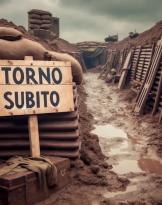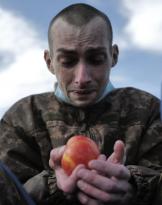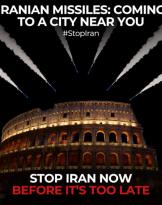The 4 May 1861 is a fundamental date for the Italian Army, because, with the Decree of the Minister of War Manfredo Fanti, what was the Sardinian Army took the new name of Italian Army: "henceforth the Royal Army will have to take the name of the Italian Army, the ancient name of the Sardinian Army being abolished". The first engagements of the "newborn" Royal Unitary Army were difficult and troubled: on the one hand the fight against banditry in the south of the Peninsula and, on the other, the Third War of Independence. Just the contrast to the brigandage was the "baptism of fire" for the Italian soldiers, to defend the Kingdom of Italy from the disruptive feelings hatched by some circles linked to the Crown of the Bourbons was an important and burdensome commitment that was absolved to perfection. This meant that the Army was seen as an instrument of the Savoy to impose with the arms a "colonization" of the south.
During the Third War of Independence, only 5 years after its creation, it suffered a heavy defeat at Custoza, by Austrian troops. The defeat increased the criticism, even though during the 1866 war, the Royal Army was able to prove its worth: before the armistice with the government of Vienna, the Italian troops managed to reach the province of Gorizia, in conjunction with the Austrian defeat in the battle of Sodowa /Königgrätz. Only the naval defeat at Lissa of the Regia Marina and the signing of the armistice denied the Regio Esercito the glory of crossing the natural border of the Alps with the Austrian empire. Unfortunately, however, only the defeat of Custoza remained in the collective memory, but in the same memory also remains a victorious and decisive operation of the Royal Army, the capture of Rome, when the 20 September 1870, the troops of the IV Corps of Army of General Raffaele Cadorna entered Rome, delivering the Kingdom Capital to Vittorio Emanuele II. But even in this case the detractors were not lacking, accusing the troops of having entered Rome only because there were no French troops, which had returned to their homeland to defend themselves from the Prussian invasion. A story, that of the Royal Army in the final part of the Risorgimento, which was troubled and disputed by many.
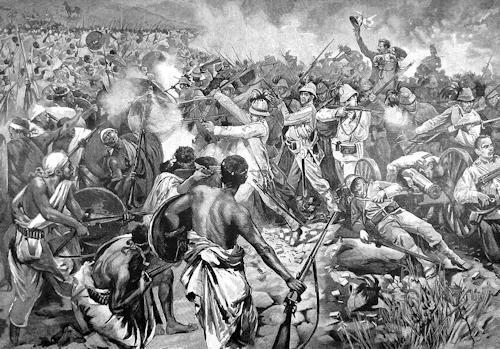 The capture of Rome allowed the Italian government to organize the army more efficiently, modeling it on what was considered the winning model, namely that of Prussia. The Ricotti Order of the 1873, which took its name from the Minister of War, General Cesare Ricotti Magnani, foresaw just this: to organize the Royal Army on the model of the Preußische Armee (Prussian Army), modifying the recruitment system and lowering the leverage period from 5 to 3 years, thus creating a large reservoir of reservists from which to draw in case of need. But it was not the only improvement, because the Army Corps were also reorganized, constituting 10, the first 15 alpine companies were created, with recruitment only in the mountain districts, and both equipment and armaments were modernized. The most important of the military reforms was in vain, however, in the face of the heavy defeat of Adua (image on the right), in the 1896, which threw on the Regio Esercito still discredited by the pacifist and antimilitarist sectors of Italy and a perennial sense of encirclement in the commands military.
The capture of Rome allowed the Italian government to organize the army more efficiently, modeling it on what was considered the winning model, namely that of Prussia. The Ricotti Order of the 1873, which took its name from the Minister of War, General Cesare Ricotti Magnani, foresaw just this: to organize the Royal Army on the model of the Preußische Armee (Prussian Army), modifying the recruitment system and lowering the leverage period from 5 to 3 years, thus creating a large reservoir of reservists from which to draw in case of need. But it was not the only improvement, because the Army Corps were also reorganized, constituting 10, the first 15 alpine companies were created, with recruitment only in the mountain districts, and both equipment and armaments were modernized. The most important of the military reforms was in vain, however, in the face of the heavy defeat of Adua (image on the right), in the 1896, which threw on the Regio Esercito still discredited by the pacifist and antimilitarist sectors of Italy and a perennial sense of encirclement in the commands military.
The "first" joy for the Army came with the Libyan war, where he managed to shake off the losing label, repeatedly defeating the Ottoman army and coming to occupy the Dodecanese and the Fezzan region. A victory that gave moral to the Royal Army in view of a crossroads that was very important for the history of Italy, Europe and the World: the First World War.
The 24 May 1915 Army troops, crossing the borders of the Austro-Hungarian Empire, also entered the Great War one year later than other European countries. A war that was under the banner of general mobilization and modernization, with the creation of special bodies, with the strengthening of the air weapon and with the introduction of the first, rudimentary, mechanical means. From May of the 1915 to the October of the 1917 the Italian Army settled on the Isonzo to the east and the Venetian and Trentino Alps, for what is known as the White War. In front of the Italian troops, however, he stood out "one of the most powerful armies in the world", quoting General Armando Diaz, and the war became, even on the Italian front, trenches and, this, is clearly visible from the disproportionate number of battles of the Isonzo, well 17, of which only two were really decisive and important, or the sixth, which allowed the Italian troops to enter Gorizia, and the seventeenth, fought in October of the 1917, or the defeat of Caporetto. But on this occasion, however, the Army was able to organize a fierce resistance on the banks of the Piave and on the slopes of Mount Grappa, stabilizing the border between the opposing armies. While the 1917 can be considered a annus horribilis for the Royal Army, the 1918 can easily be called also annus mirabilis, because it coincided with the two decisive battles that broke through the opposing line: the battle of the solstice and that of Vittorio Veneto. The last one also marked the end of hostilities and the surrender of central empires to Italy.
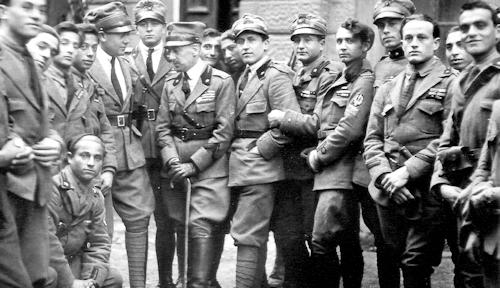 The contribution of blood given by Italy was impressive, counting around 600 thousand deaths at 4 November 1918, a fundamental contribution to the definitive defeat of the Empires. The end of the war, however, also marked the demobilization and resumption of antimilitaristic sentiments in much of Italian thought, of those who wondered what it was like to keep an army standing now that there would be no more wars and precisely within the Royal Army created the first anti-parliamentary defections, when some soldiers, who had fought in the ranks of the Arditi, participated in the Fiume enterprise (photo). The approach with nationalist movements and feelings of revenge against the socialists led many soldiers to fight the same battle as Fascism. The rise of Mussolini and the Fascist regime changed the framework of the Army, which was given the task of forming "the New Italian" assisted by the fascist militias, but at the same time experienced a period of profound reform and modernization, which had suffered but from the little Italian industrial production and from the heavy economic effects derived from the war in Ethiopia.
The contribution of blood given by Italy was impressive, counting around 600 thousand deaths at 4 November 1918, a fundamental contribution to the definitive defeat of the Empires. The end of the war, however, also marked the demobilization and resumption of antimilitaristic sentiments in much of Italian thought, of those who wondered what it was like to keep an army standing now that there would be no more wars and precisely within the Royal Army created the first anti-parliamentary defections, when some soldiers, who had fought in the ranks of the Arditi, participated in the Fiume enterprise (photo). The approach with nationalist movements and feelings of revenge against the socialists led many soldiers to fight the same battle as Fascism. The rise of Mussolini and the Fascist regime changed the framework of the Army, which was given the task of forming "the New Italian" assisted by the fascist militias, but at the same time experienced a period of profound reform and modernization, which had suffered but from the little Italian industrial production and from the heavy economic effects derived from the war in Ethiopia.
The war in Ethiopia saw the Army at the forefront of fighting to conquer the last portion of African land left free from colonization, which the 5 May 1936 succeeded. Not even six months passed and the Army itself was called into question, by sending volunteers, into the Spanish civil war. The contribution given in these two wars by the Army was important, but caused a chronic and unbridgeable delay, with other European powers, in technological development, a delay that became self-evident with the Second World War. The idea of waging a war parallel to that of the Third Reich was immediately denied by the defeats in Greece and in Northern Africa, without counting the defeat, almost immediately, in East Africa. The total subjection in the political-military choices to the Nazi Germany put the Regio Esercito on a plan in some ways inferior to that of the Wehrmacht, but also in this case the effort made by the Italian soldiers was impeccable and, in some cases, heroic. It was heroic when, during the 1943 Russia retreat, the effort of the Italian military allowed the ARMIR troops to exit the bag that had been created by the Red Army and to return to Italy, leaving behind around 80mila between fallen and prisoners. The mental strength of Italian soldiers, however, had already been noted by Field Marshal Erwin Rommel who had praised the Italian troops engaged in the battle of El Alamein.
 The armistice of the 8 in September 1943 marked the greatest defeat for the Army, but it did not undermine the morale of the soldiers and officers who, after a difficult period due to lack of commands, organized the Military Resistance to the German troops who had invaded the Peninsula from the north. The creation of the 1 motorized grouping constituted the rebirth of the Royal Army and its victory in the ascent of the Peninsula alongside the Allied troops. But in addition to fighting in the Cobelligerent Army, many Italian soldiers enlisted in the northern part of the country and in the Balkans, in the partisan divisions, giving a fundamental contribution to the Liberation of Italy.
The armistice of the 8 in September 1943 marked the greatest defeat for the Army, but it did not undermine the morale of the soldiers and officers who, after a difficult period due to lack of commands, organized the Military Resistance to the German troops who had invaded the Peninsula from the north. The creation of the 1 motorized grouping constituted the rebirth of the Royal Army and its victory in the ascent of the Peninsula alongside the Allied troops. But in addition to fighting in the Cobelligerent Army, many Italian soldiers enlisted in the northern part of the country and in the Balkans, in the partisan divisions, giving a fundamental contribution to the Liberation of Italy.
The end of the Second World War marked another heavy tribute to be paid, after that of the blood of war, or rather that of the imposition of the future structure of the Italian Army by the Allied Military Mission in Italy. The directive issued by the Allied Command led, in March 1946, to the first organic legislation of the post-war period, which included: 11 Territorial Military Commands, reporting to the future Ministry of Defense, on which the units, logistics, district administrations and centers depended training of recruits. The military divisions were created ad hoc, exploiting the large units already present or constituting new ones with tasks both, reconstituting all the historical Army Weapons, while later also the Cavalry Weapon was rebuilt assigning them, however, only the task of working as explorers for each infantry division. This allowed the Italian Army to arrive prepared both for the clauses of the 1947 Peace Treaty and for joining NATO in the 1949.
NATO became the cornerstone of Italian military policy, shifting Italian attention to defending national borders from a hypothetical Soviet invasion and launching the Italian Army into an increasingly inter-force mentality and increasingly aimed at humanitarian intervention first on earth Italian, as in the case of natural disasters, then in a foreign land. It was in a foreign land that the Army had its first armed mission since the end of the war, when it was sent to Lebanon, from the 1980 to the 1982, with the aim of keeping the peace, earning the respect of the United States in the field. With the fall of the Berlin Wall and the collapse of the Soviet Union, the missions of peacekeeping they have become the basis of every mission of the Italian Army abroad, operating all over the world for this purpose. The last few years, on the other hand, have seen the greatest transformation of the Army, which began with the separation from the Carabinieri and the suppression of military service, greatly reducing the list of Army personnel, thus allowing a reform still in course that will transform it into an agile and lean tool for rapid intervention in international missions. Just the international missions were the path followed in the 2000 years, starting with Iraq and Afghanistan, then continuing to Libya and again, now, in the fundamental mission to defend the Mosul dam in Iraq.
Therefore, today, 156 have been years since the foundation of this Armed Forces, which over time has seen its tasks and internal organization transformed, but has always managed to remain "on the piece" without losing its identity and its operational capacity.
 (photo: web / ministry of defense)
(photo: web / ministry of defense)


